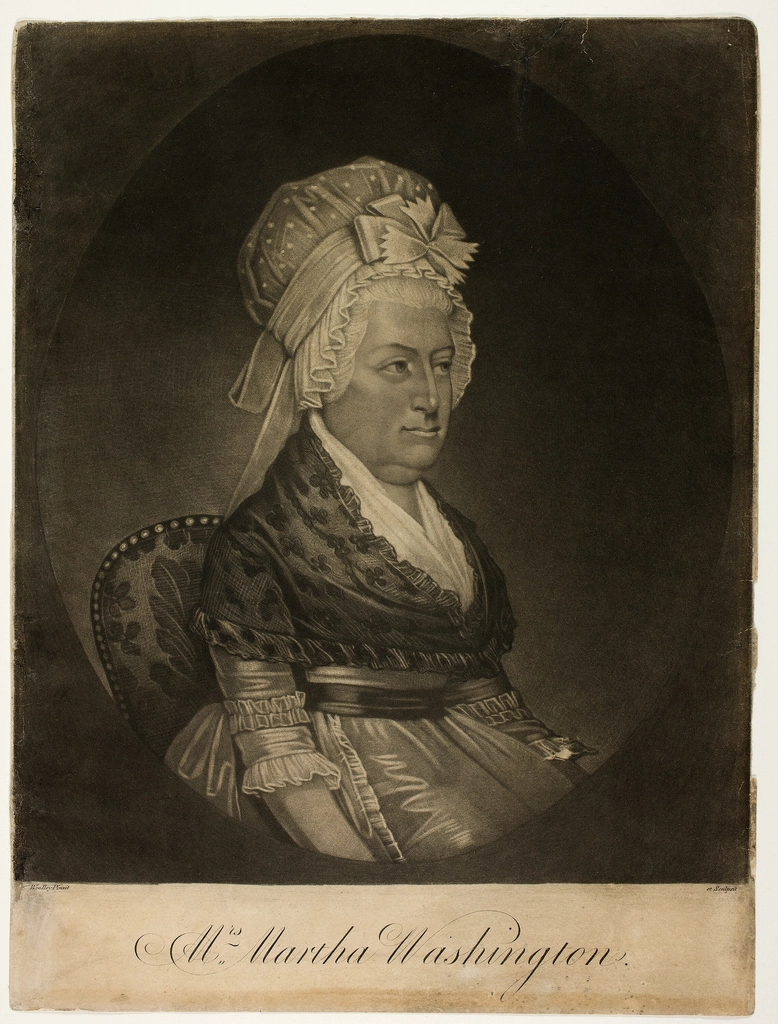The Unsung Heroines Who Shaped a Nation

What if I told you that the American Revolution couldn’t have succeeded without women who never held a musket or signed a declaration? Women played critical roles in the American Revolution and subsequent War for Independence, and the war would not have been able to progress as it did without the widespread ideological, as well as material, support of both male and female inhabitants of the colonies. Yet historians and genealogists have mostly overlooked the role of women in the American Revolution, even though women’s roles in working their farms, raising their children, and generally supporting the morale of the Patriot side were of great importance. These forgotten stories reveal a truth that’s been hiding in plain sight for nearly 250 years.
Picture this: while men debated freedom in smoky taverns, women were already living it through acts of courage that would make today’s activists proud. For most people who became involved in the Revolutionary War, the war came to them, and women found themselves thrust into roles they never imagined. From spying behind enemy lines to running entire households during wartime, these remarkable individuals didn’t just support the revolution—they were the revolution.
Martha Washington: The First Lady of Camp Life

The wives of high-ranking officers, including Martha Washington, also accompanied their husbands at winter encampments, and every year, during the long winter months when the fighting was at a standstill, the General asked Martha to join him at his winter encampment. But Martha wasn’t just there for moral support. Martha Washington’s residence also became the camp’s social center, acting as hostess, she received innumerable guests, including political leaders, foreign dignitaries, Indian chiefs, and military officials, and although social life conducted under the cloud of war was much more restrained than social life at Mount Vernon, Washington’s headquarters was known as a haven of warmth, good food, and lively conversation.
Think about it—while soldiers suffered through brutal winters like Valley Forge, Martha transformed military headquarters into diplomatic hubs. Martha Washington also acted as an intermediary between the General and individuals who asked for his assistance in a variety of matters, and in April 1778, for example, four Quaker women from Philadelphia visited Washington’s headquarters at Valley Forge where they presented Washington with a petition seeking the release from exile of a group of Quaker men, and Martha Washington conversed with the women and served them dinner. She wasn’t just the general’s wife—she was America’s first unofficial diplomat.
The Invisible Army: Camp Followers Who Kept the Revolution Moving

Martha Washington was far from the only woman at camp, as in the 18th-century, women were a visible part of any part of army encampment, with some of these women being the wives of soldiers who simply trailed along, having nowhere else to go, while other women offered their services for pay, as cooks, washerwomen, nurses, prostitutes, or seamstresses. These women, known as camp followers, were often viewed with suspicion, yet they performed essential functions that kept the Continental Army alive.
Many women performed domestic duties for the Continental Army and served as nurses, while others actively engaged with the British on the battlefield, fighting alongside Continental soldiers in defense of the 13 colonies—quite simply, women played instrumental roles in maintaining the Continental Army. The greatest number of camp follower names appear in the historic records from 1780, when there were ten thousand soldiers camped nearby in Jockey Hollow, and eleven couples married between January and May while the encampment took place. Love, it seems, found a way even in the darkest times of war.
Margaret Corbin: The Woman Who Literally Took Her Husband’s Place in Battle

One of these individuals, Margaret Corbin, not only followed her husband to war, but even took his place in battle defending Fort Washington from a British and Hessian attack in November, 1776. When her husband John was killed while loading artillery, Margaret didn’t flee—she stepped up to the cannon herself. On Nov. 16, 1776, the British attacked Fort Washington and both Margaret and John leapt into action, with John serving as a matross for his artillery gun, loading the cannon, but the British proved to be formidable opponents and bombarded Fort Washington’s defenses before they launched their assault.
The consequences were devastating but her courage was extraordinary. After receiving treatment, the British army returned Corbin and several prisoners to the Continental Army who sent her and a number of other women and injured Soldiers to recover in a Philadelphia hospital, where she ultimately lost the use of her left arm, and on July 6, 1779, in recognition of her bravery at Fort Washington, Congress awarded Corbin the first pension received by a woman in American history. Think about that—the very first woman to receive a military pension from the United States government was someone who literally fought for freedom with her own hands.
Abigail Adams: The Revolutionary Voice Behind “Remember the Ladies”

Women like Abigail Adams, the wife of Massachusetts Congressional Delegate John Adams, influenced politics, and it was Abigail Adams who famously and voluminously corresponded with her husband while he was in Philadelphia, reminding him that in the new form of government that was being established he should “remember the ladies” or they too, would foment a revolution of their own. But Abigail’s influence went far beyond that famous quote.
In 1775, along with Mercy Warren and the governor’s wife, Hannah Winthrop, Abigail was appointed by the Massachusetts Colony General Court to question fellow Massachusetts women who were charged by either their word or action of remaining loyal to the British crown and working against the independence movement, with John writing to Abigail, “you are now a politician and now elected into important office, that of judges of Tory ladies.” Abigail remained in Braintree managing the farm and household and raising their children, and although women at that time did not normally handle business affairs, Abigail traded livestock, hired help, bought land, oversaw construction, and supervised the planting and harvesting. She was running a complex agricultural business while her husband shaped the nation.
Mercy Otis Warren: America’s First Political Playwright and Revolutionary Historian

Mercy Otis Warren was a published poet, political playwright and satirist during the age of the American Revolution—a time when women were encouraged and expected to keep silent on political matters—and as an avid patriot, Warren began writing political dramas that denounced British policies and key officials in Massachusetts, notably Governor Thomas Hutchinson. Her pen was as sharp as any sword in the revolution.
Her 1772 satire, “The Adulator” (published anonymously in the Massachusetts Spy newspaper), criticized the British colonial governor’s policies a full four years before Jefferson wrote the Declaration of Independence, and Warren also published two additional plays skewering British colonial leaders, Defeat (1773) and The Group (1775), while she supported the Boston Tea Party and boycotts of British imports and urged other women to follow suit. From the outset of the American Revolution, Warren began writing its history, which was published in 1805 as History of the Rise, Progress and Termination of the American Revolution—this was among the first nonfiction book published by a woman in America, and she was the third woman (after Anne Bradstreet and Phillis Wheatley) to publish a book of poems.
Phillis Wheatley: The Enslaved Poet Who Wrote Freedom Into American Literature

Phillis Wheatley, an enslaved African American living in Boston, took up the pen and wrote poetry, becoming one of the first published female authors in America and the first African American woman to be published, with her 1773 collection Poems on Various Subjects, Religious and Moral being popular on both sides of the Atlantic and her poems focusing on patriotism and human virtues. Her story seems almost impossible—a young enslaved woman becoming an internationally recognized poet during the height of the revolution.
She even wrote a poem about George Washington, “To His Excellency, George Washington” in 1775, which she personally read to him at his Cambridge headquarters in 1776 while he was with the Continental Army in Massachusetts besieging the British, with her visit being the result of an invitation from Washington, and Wheatley obtained her freedom upon the death of her master in 1778. The first book published by an African American, its forward was signed by John Hancock and other Boston leaders—but not without first having to prove she was indeed the author because of her race and presumed illiteracy. Imagine having to prove you wrote your own poems because people couldn’t believe someone who looked like you could be that talented.
Sybil Ludington: The Female Paul Revere Who Rode Through a Storm

New York teenager Sybil Ludington, was the female equivalent of Paul Revere, though she rode twice as far as Revere and in a driving rainstorm in April, 1777. While Revere’s midnight ride gets all the glory, this 16-year-old girl covered 40 miles through dangerous territory to rally the militia. Her father, Henry, was a Colonel in the militia in command of 400 men, and not unlike Revere who two years earlier roused the communities outside of Boston to British troops being on the march to seize arms, Ludington spurred her horse, prodding him with a stick to raise the alarm in Putnam County, New York, and though the British were successful in their raid on Danbury, roused by Ludington’s alarm, the Patriots encountered the British at nearby Ridgefield, Connecticut, and were successful in driving them back to Long Island Sound.
Deborah Sampson: The Master of Disguise Who Fought as Robert Shurtliff

One of the best examples of a woman who disguised herself as a man to fight in the Continental Army was Deborah Sampson from Uxbridge, Massachusetts, and amazingly, she also has a paper trail concerning her combat service in the army, where she fought under the alias of Robert Shurtliff, the name of her deceased brother, in the light infantry company of the Fourth Massachusetts Regiment. Her commitment to the cause was so strong that she literally risked her life every single day.
She mustered into service in the spring of 1782 and saw action in Westchester County, New York just north of the City of New York where she was wounded in her thigh and forehead, and not wanting her identity to be revealed during medical care she permitted physicians to treat her head wound and then slipped out of the field hospital unnoticed, where she extracted one of the bullets from her thigh with a penknife and sewing needle—the other bullet was lodged too deep and her leg never fully healed. Can you imagine performing surgery on yourself to maintain a secret that could get you executed?
The Spy Networks: Women Who Risked Everything for Intelligence

Philadelphia school teacher, Anne Bates, became a successful British spy who breached General Washington’s camp on multiple occasions, following her husband, a British soldier, to his military station in New York, and shortly afterward, Major Drummond employed Bates as a spy who eventually successfully entered Washington’s camp and relayed pertinent information to the British, becoming one of the most well-known spies during the war. It was there she took up the mantle of spy and throughout July and August of 1778, disguised herself as a peddler to spy on Washington’s army at White Plans, New York, and on her return from each mission, she provided information on the number of soldiers, amount of artillery, level of supplies, and any murmurings of troop movements to her British allies.
Women on both sides of the conflict used their perceived invisibility as their greatest weapon. Margaret Moore Barry served as scout, messenger, and women spy for American forces. These women understood that being underestimated was actually their superpower—who would suspect a woman selling goods at market of being a trained intelligence operative?
Esther DeBerdt Reed and the Ladies Association: Organizing Financial Support

Esther DeBerdt Reed established the “Ladies of Philadelphia,” raising $300,000 for soldiers. This wasn’t just a bake sale—we’re talking about serious money that kept the Continental Army functioning. Women provided a variety of support for the war effort from the home front, putting their skills to use and supporting the armies in a variety of important ways—some women sewed uniforms, clothes, and blankets for soldiers, some made bullets, as well as rolled and packed cartridges, while others raised funds for the war effort.
These women created what was essentially the first organized fundraising campaign in American history. They went door-to-door, wrote letters, and used every social connection they had to support the revolution. Their efforts showed that you didn’t need to carry a musket to fight for independence—sometimes a well-organized network of determined women could be just as effective as a regiment of soldiers.
The Home Front Heroes: Managing Life During Wartime

Women also faced daily pain and hardship, as many times, they watched their homes burn, were threatened with physical harm, or had to bury their loved ones, while women also faced dangers working as spies, nursing, boycotting British goods, publishing writings in support of the American cause, and, when necessary, they defended their homes against attacks from the British or their allies. The war didn’t just happen on battlefields—it happened in kitchens, farmyards, and family homes across the colonies.
“It is impossible for me to describe to you what I felt, while the British Army was on this side Ashley-Ferry,” Mary Lucia Bull wrote from Charleston in 1779 in the midst of the American Revolution, recounting the terror and uncertainty that war introduced into her life, she recalled, “we never went in to our beds at night, had Candles constantly burning & were alarmed at every noise that we heard.” This was the reality for thousands of women who lived through the revolution—constant fear, uncertainty, and the need to be ready for anything at any moment.
The Legacy That Almost Disappeared

Women are often underrepresented in the historical record, and female camp followers are no different, as some of these women were soldiers’ wives or fiancés, while others were widows, runaway servants, and women who faced poverty and danger due to the war. For too long, these stories have been footnotes in history books, brief mentions in letters, or completely erased from the narrative entirely.
But here’s what’s exciting—in response to the recent JER Conversation on the Revolution at 250, Lauren Duval offers further insight into new approaches to women’s history and the Revolutionary War, and historians are finally giving these women the recognition they deserve. As March 2025 approaches, the Museum of the American Revolution is planning a 60-minute gallery highlights tour exploring the roles of Revolutionary-era women on the home front and on campaign during the Revolutionary War. We’re finally ready to tell the complete story of the American Revolution.
Conclusion: The Revolution That Continues

These women didn’t just support the American Revolution—they were essential to its success. From Martha Washington’s diplomatic dinners to Margaret Corbin’s artillery courage, from Abigail Adams’ political influence to Phillis Wheatley’s literary revolution, from Sybil Ludington’s midnight ride to the spy networks that kept intelligence flowing, women shaped the outcome of America’s fight for independence in ways we’re only now beginning to fully understand.
Their stories remind us that revolution isn’t just about the famous men who signed documents or led armies—it’s about ordinary people doing extraordinary things when history calls on them. These women faced the same fears, dangers, and uncertainties as everyone else, but they chose courage over comfort, action over apathy, and hope over despair. Next time you think about the American Revolution, remember that it wasn’t just about taxation without representation—it was about women without recognition fighting for a freedom they might never fully enjoy themselves.
What would have happened if these women had simply stayed home and waited for the men to sort things out?






